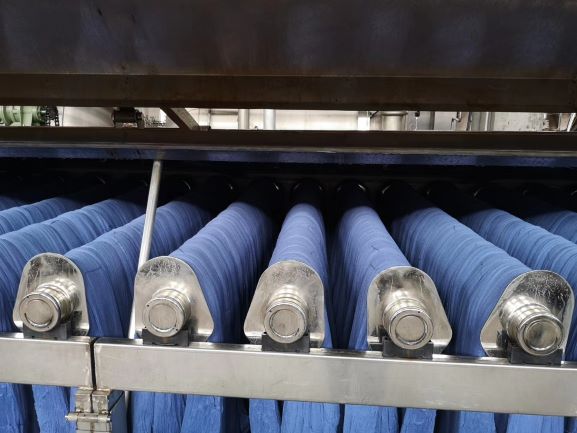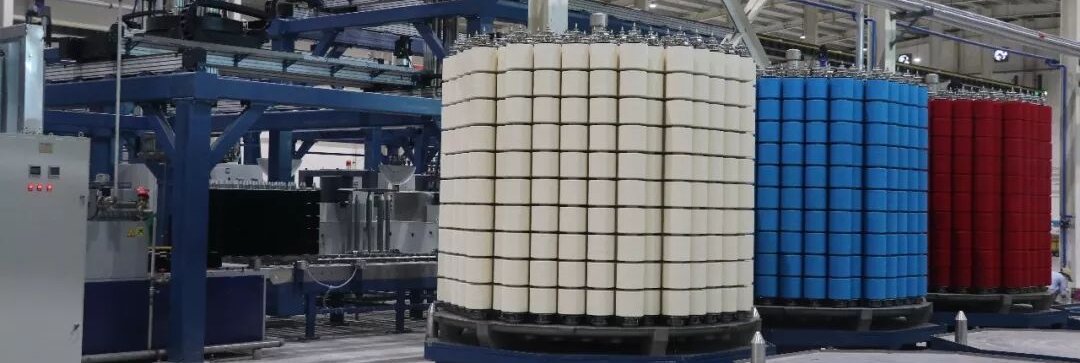
 Current Continuous filament high tenacity polyester and nylon 6,6 raw white sewing thread even bonded and embroidery threads in Farer, are all wound on dye tube for package dyeing. But when we look back on the past, Sewing Thread dyeing, a craft with a millennium-old history, long relied on hank dyeing as the primary method. However, a groundbreaking shift occurred in 1882 with the world’s first patent for cheese dyeing (dye tube package dyeing), marking a technological revolution in thread dyeing. Subsequent advancements, such as beam dyeing, further propelled the modernization of dyeing techniques.
Current Continuous filament high tenacity polyester and nylon 6,6 raw white sewing thread even bonded and embroidery threads in Farer, are all wound on dye tube for package dyeing. But when we look back on the past, Sewing Thread dyeing, a craft with a millennium-old history, long relied on hank dyeing as the primary method. However, a groundbreaking shift occurred in 1882 with the world’s first patent for cheese dyeing (dye tube package dyeing), marking a technological revolution in thread dyeing. Subsequent advancements, such as beam dyeing, further propelled the modernization of dyeing techniques.
Historical Context and Innovations
While hank dyeing persisted for centuries, modern methods like cheese dyeing and beam dyeing introduced uniformity and efficiency. These innovations refined precision and productivity, driving transformative changes in the textile industry.
Some Key Dyeing Processes
Hank Dyeing
Spun or filament threads are woven into interconnected hanks via a reeling machine, then immersed in dyeing equipment for thorough coloration. This technique remains widely praised for its durability and vivid results.
Package Dyeing
In vertical cheese dyeing machines, threads wound on perforated dye tubes undergo penetrative circulation of dye liquor, ensuring even absorption and consistency.
Beam Dyeing
Loose warping creates porous beam-wound yarns, immersed in dyeing machines where dye liquor circulates via a main pump. This achieves homogeneous color distribution for warp threads.
Beam Pad Dyeing
Critical for indigo-dyed denim, multiple beams undergo repeated dipping, oxidation, and drying to produce uniformly colored warp yarns.
Rope Dyeing
Yarn bundles are repeatedly dyed and oxidized, ideal for denim production. Post-dyeing processes like sizing stabilize the color.
Bread Yarn Dyeing
Similar to loose fiber or cheese dyeing, bundled yarns are dyed uniformly and processed through splitting and sizing.

Some Specialized Dyeing Techniques
Special Yarn Dyeing
Techniques like segment dyeing, tie-dyeing, and gradient dyeing create diverse artistic effects.
Segment Dyeing (Print Sections)
Irregular color segments are printed on hanks, often in multicolored patterns.
Sectional Dyeing
Multiple dyes are applied at intervals for long, blended color sections, commonly used in knitwear.
Tie-Dyeing
Bound areas resist dye penetration, producing gradient and blank patterns through controlled immersion.
Warp Printing
Patterns are printed solely on warp threads, creating a subtle, semi-transparent aesthetic.
Gradient Dyeing
Varying immersion times yield transitional hues, exemplified by traditional Chinese embroidery “seven-color threads”. Techniques like half-side dyeing and spray-dot dyeing also enrich this category.
This synthesis highlights the progression from traditional methods to mechanized innovations, reflecting the textile industry’s adaptability and creativity.
# Package dyeing Dye tube Soft cone Filament polyester sewing thread Bonded nylon 6,6 thread